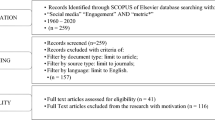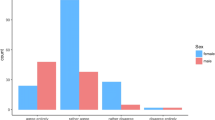Abstract
Background
As an aesthetic surgery, a successful rhinoplasty is often assessed by patient satisfaction, subject to a diverse array of qualitative factors including patient expectations and happiness with care provided. While substantial effort has been dedicated to understanding patients’ post-operative concerns, addressing patients’ pre-operative questions has been comparatively less studied. This study analysed pre- and post-operative questions about rhinoplasty on social media to gain insights into patients’ concerns and develop targeted educational material.
Methods
The most viewed rhinoplasty questions on Realself.com, a social media platform for discussions about cosmetic surgeries, were collected and analysed. Questions were then stratified into pre- and post-operative and further assigned categories based on common topics found in the data. Using a machine learning approach, the most common pre- and post-operative questions were determined.
Results
2014 rhinoplasty questions were collected in total, with 957 pre-operative and 1057 post-operative. The most commonly asked pre-operative questions were about appearance (n = 441, 46.1%), function (n = 102, 10.7%), and cost (n = 94, 9.8%). The most commonly asked post-operative questions were about appearance (n = 502, 47.5%), behaviour allowed/disallowed (n = 283, 26.8%), and symptoms after surgery (n = 235, 22.2%). An educational handout with the 10 most common pre- and post-operative questions was developed using machine learning analysis, with the majority of questions about appearance.
Conclusions
Patients primarily expressed concern about appearance when asking questions about rhinoplasty on social media, along with other aspects of their pre- and post-operative course. The educational handout developed by this study can be applied to address commonly asked patient questions during pre-operative education.
Level of Evidence V
This journal requires that authors assign a level of evidence to each article. For a full description of these Evidence-Based Medicine ratings, please refer to the Table of Contents or the online Instructions to Authors www.springer.com/00266.


Similar content being viewed by others
References
2019 Plastic Surgery Statistics Report. American Society of Plastic Surgeons. https://www.plasticsurgery.org/documents/News/Statistics/2019/plastic-surgery-statistics-full-report-2019.pdf. Published 2020. Accessed 26 September 2020.
Lohuis PJFM, Hakim S, Duivesteijn W, Knobbe A, Tasman A-J (2013) Benefits of a short, practical questionnaire to measure subjective perception of nasal appearance after aesthetic rhinoplasty. Plast Reconstr Surg 132(6):913e–923e
Ching S, Thoma A, McCabe RE, Antony MM (2003) Measuring outcomes in aesthetic surgery: a comprehensive review of the literature. Plast Reconstr Surg 111(1):469–480 (discussion 481 462)
Rezaei F, Rezaei F, Abbasi H, Moradi H (2019) A comparison of doctor/patient satisfaction with aesthetic outcomes of rhinoplasty: a prospective study. J Med Life 12(4):374–380
Byrne M, Chan JC, O’Broin E (2014) Perceptions and satisfaction of aesthetic outcome following secondary cleft rhinoplasty: evaluation by patients versus health professionals. J Cranio-Maxillofac Surg 42(7):1062–1070
Khansa I, Khansa L, Pearson GD (2015) Patient satisfaction after rhinoplasty: a social media analysis. Aesthet Surg J 36(1):NP1–NP5
Klassen AF, Cano SJ, East CA et al (2016) Development and psychometric evaluation of the FACE-Q scales for patients undergoing rhinoplasty. JAMA Fac Plast Surg 18(1):27–35
Spiekermann C, Savvas E, Rudack C, Stenner M (2018) Development and validation of a brief four-component questionnaire to identify patient’s motivation to undergo functional rhinoplasty. Facial Plast Surg 34(4):350–355
Khan N, Rashid M, Khan I et al (2019) Satisfaction in patients after rhinoplasty using the rhinoplasty outcome evaluation questionnaire. Cureus 11(7):e5283
Spiekermann C, Rudack C, Stenner M (2017) Reliability and validity of the German version of the utrecht questionnaire for outcome assessment in aesthetic rhinoplasty (D-OAR). Eur Arch Otorhinolaryngol 274(11):3893–3898
Barone M, Cogliandro A, Di Stefano N, Tambone V, Persichetti P (2017) A systematic review of patient-reported outcome measures after rhinoplasty. Eur Arch Otorhinolaryngol 274(4):1807–1811
Keles HP, Besir A, Livaoglu M (2020) Comparison of rhinoplasty patients informed with standard verbal information in preoperative period and rhinoplasty patients informed and treated with visual information through catalog in terms of the development of agitation, edema and ecchymose in the postoperative period. J Craniofac Surg 31(3):816–820
Sharif-Askary B, Carlson AR, Cornejo A, Berkowitz RL, Marcus JR (2020) Perioperative practice patterns for rhinoplasty: faculty speakers from the first international meeting of rhinoplasty societies. Plast Reconstr Surg 145(5):1013e–1015e
Hong P, Makdessian AS, Ellis DA, Taylor SM (2009) Informed consent in rhinoplasty: prospective randomized study of risk recall in patients who are given written disclosure of risks versus traditional oral discussion groups. J Otolaryngol Head Neck Surg 38(3):5
Santos PJF, Daar DA, Paydar KZ, Wirth GA (2018) Readability of online materials for rhinoplasty. World J Plast Surg 7(1):89–96
Wheeler CK, Said H, Prucz R, Rodrich RJ, Mathes DW (2011) Social media in plastic surgery practices: emerging trends in North America. Aesthet Surg J 31(4):435–441
Gould DJ, Grant Stevens W, Nazarian S (2017) A primer on social media for plastic surgeons: what do i need to know about social media and how can it help my practice? Aesthet Surg J 37(5):614–619
Domanski MC, Cavale N (2012) Self-reported, “worth it” rating of aesthetic surgery in social media. Aesthet Plast Surg 36(6):1292–1295
Bird S, Klein E, Loper E (2009) Natural language processing with Python: analyzing text with the natural language toolkit. “O’Reilly Media Inc,” California
Pedregosa F, Varoquaux G, Gramfort A et al (2011) Scikit-learn: Machine learning in Python. J Mach Learn Res 12:2825–2830
Hagberg A, Swart P, Chult S (2008) Exploring network structure, dynamics, and function using NetworkX. Los Alamos National Lab (LANL), Los Alamos
Svd Walt, Colbert SC, Varoquaux G (2011) The NumPy array: a structure for efficient numerical computation. Comput Sci Eng 13(2):22–30
Robertson S (2004) Understanding inverse document frequency: on theoretical arguments for IDF. J Doc 60(5):503–520
Huang A (2008) Similarity measures for text document clustering. Paper presented at: Proceedings of the sixth new zealand computer science research student conference (NZCSRSC2008), Christchurch, New Zealand
Page L, Brin S, Motwani R, Winograd T (1999) The PAGERANK citation ranking: bringing order to the web. Stanford InfoLab, California
Najjaran Toussi H, Shareh H (2019) Changes in the indices of body image concern, sexual self-esteem and sexual body image in females undergoing cosmetic rhinoplasty: a single-group trial. Aesthet Plast Surg 43(3):771–779
Sena Esteves S, Gonçalves Ferreira M, Carvalho Almeida J, Abrunhosa J, Almeida ESC (2017) Evaluation of aesthetic and functional outcomes in rhinoplasty surgery: a prospective study. Braz J Otorhinolaryngol 83(5):552–557
Kobayashi D, Goto R, Tsugawa Y (2019) Impact of improved price transparency on patients’ demand of healthcare services. Soc Sci Med 235:112390
Kyle MK, Ridley DB (2007) Would greater transparency and uniformity of health care prices benefit poor patients? Health Aff 26(5):1384–1391
Gupta R, Tsay C, Fogerty RL (2015) Promoting cost transparency to reduce financial harm to patients. AMA J Ethics 17(11):1073–1078
Alokozai A, Crijns TJ, Janssen SJ et al (2019) Cost in hand surgery: the patient perspective. J Hand Surg Am 44(11):992.e991-992.e926
Billig JI, Chen J-S, Lu Y-T, Chung KC, Sears ED (2020) The economic burden of out-of-pocket expenses for plastic surgery procedures. Plast Reconstr Surg 145(6):1541–1551
Haymes AT (2016) The quality of rhinoplasty health information on the internet. Ann Plast Surg 76(2):143–149
Shah A, Patel A, Smetona J, Rohrich RJ (2017) Public perception of cosmetic surgeons versus plastic surgeons: increasing transparency to educate patients. Plast Reconstr Surg 139(2):544e–557e
Naraghi M, Atari M (2016) Development and validation of the expectations of aesthetic rhinoplasty scale. Arch Plast Surg 43(4):365–370
Mehta U, Mazhar K, Frankel AS (2010) Accuracy of preoperative computer imaging in rhinoplasty. Arch Facial Plast Surg 12(6):394–398
Moscatiello F, Jover JH, Ballester MAG, Hernández EC, Piombino P, Califano L (2010) Preoperative digital three-dimensional planning for rhinoplasty. Aesthetic Plast Surg 34(2):232–238
Author information
Authors and Affiliations
Corresponding author
Ethics declarations
Conflict of interest
The authors declare that they have no conflict of interest.
Ethical approval
This article does not contain any studies with human participants or animals performed by any of the authors.
Informed consent
For this type of study, formal consent is not required.
Additional information
Publisher's Note
Springer Nature remains neutral with regard to jurisdictional claims in published maps and institutional affiliations.
Rights and permissions
About this article
Cite this article
Tseng, C.C., Gao, J., Talmor, G. et al. Characterizing Patient Questions Before and After Rhinoplasty on Social Media: A Big Data Approach. Aesth Plast Surg 45, 1685–1692 (2021). https://doi.org/10.1007/s00266-021-02203-9
Received:
Accepted:
Published:
Issue Date:
DOI: https://doi.org/10.1007/s00266-021-02203-9




